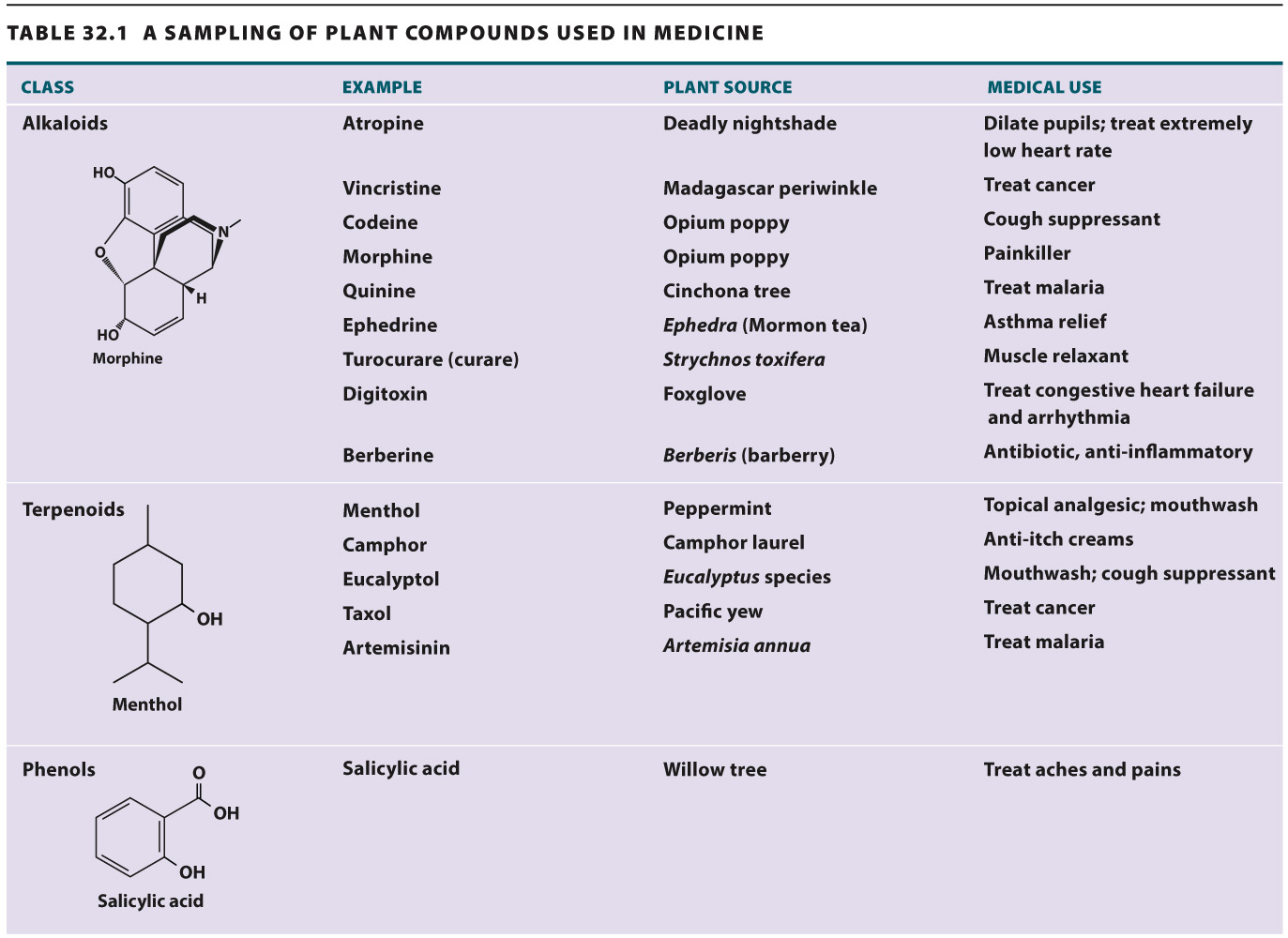Diverse chemical compounds deter herbivores.
The cardenolides produced by milkweeds are only one example from the vast chemical arsenal available to plants for protection. Some plants produce alkaloids, nitrogen-

A second group of defensive compounds, the terpenes, do not contain nitrogen. As a result, plants can produce them for defense without having to make use of nitrogen that could otherwise be used in protein synthesis. Small terpenes are volatile, vaporizing easily, and so make up many of the essential oils associated with plants. The distinctive smells of lemon peel, mint, sage, menthol, pine resins, and geranium leaves are all due to terpenes. While we find these odors pleasant, they are feeding deterrents to mammals such as squirrels and moose. In addition, terpenes obstruct the growth and metabolism of both fungi and insects. As a result, pyrethrin, a terpene derivative extracted from chrysanthemums, is marketed commercially as an insecticide. Other compounds derived from terpenes interfere with insect development. For example, exposure to compounds that are replicas of insect hormones cause insects to molt prematurely and thereby keep their populations in check. Taxol, which is used in chemotherapy, is a terpene that was first extracted from the bark of the Pacific yew tree.
Phenols form the third main class of defensive compounds, illustrated by the tannins found widely in plant tissues. Tannins bind with proteins, reducing their digestibility. Plants store tannins in cell vacuoles, and so these compounds come into contact with the protein-
Some of the chemical defenses used by plants are stored in a separate compartment from the enzymes that activate them. When you bite into a plant belonging to the cabbage family, the chemicals stored in the vacuole comingle with enzymes in the cytosol. The enzymes then catalyze the production of mustard oils from these compounds. Mustard oils give cabbage and its relatives their distinctive smell. They serve as feeding deterrents because they interfere with insect growth.
Cassava roots, an important food crop in Africa and South America, release the toxin hydrogen cyanide when their cells are damaged. Before cassava roots can be safely consumed, the roots must be ground and the cyanide-
Some chemical defenses found in plants are protein based. Plants and animals use the same 20 amino acids to construct proteins, but some plants produce additional amino acids as well. Plants do not incorporate these additional amino acids into their proteins, but herbivores that ingest them do. The resulting proteins can no longer fulfill their function. Thus, insect herbivores that consume nonprotein amino acids grow slowly and often die early. A second protein-